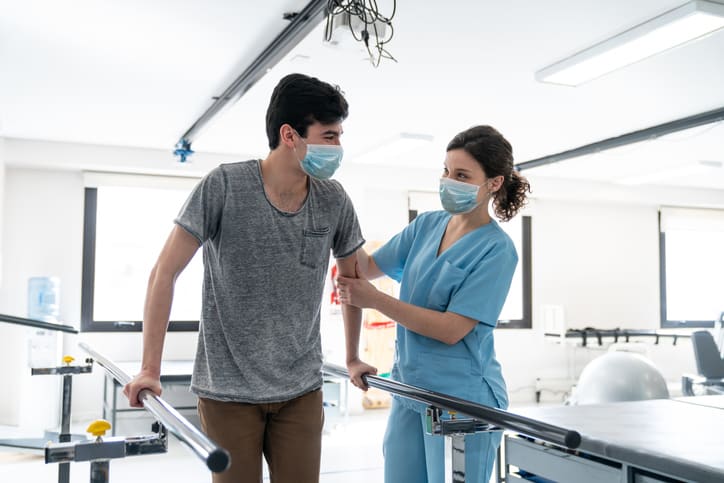

Type 1 diabetes and type 2 diabetes symptoms comparison
Diabetes – both type 1 diabetes and type 2 diabetes – exhibits similar symptoms upon diagnosis. The classic symptoms, often called the “polys” by healthcare providers, exhibit themselves due to markedly high blood sugar levels.
- Polyuria. Polyuria is excess urination. The average adult makes three liters of urine per day; in the adult suffering from undiagnosed diabetes, that can skyrocket to 15 liters of urine per day. Polyuria can also be a symptom of overactive bladder, an enlarged prostate, and urinary tract infections.
- Polydipsia. Polydipsia is excess thirst. This is characterized by unquenchable thirst and is typically coupled with polyuria. Though diabetes can cause polydipsia, it can also be caused by diabetes insipidus (which is not related to blood sugar levels), mental illnesses, and brain injuries.
- Polyphagia. Also known as hyperphagia, polyphagia is excessive hunger. Polyphagia is characterized by being excessively hungry, even after eating a large meal; it is different than having a ravenous appetite after strenuous activity. Often caused by high blood sugar, it can also be caused by low blood sugar. It can also be caused by hyperthyroidism, stress, and a poor diet.
On their own, the “polys” are often related to other conditions. Together, they are classic symptoms of type 1 or type 2 diabetes in both adults and children.
Symptoms of diabetes in adults and children can manifest in similar – and different ways.
Here are some of the most common symptoms of diabetes in children –
- Polyuria; in a baby, frequent diaper changes may be noticed. In a toilet-trained child, bedwetting or accidents may be noticed.
- Polydipsia
- Dehydration related to the aforementioned symptoms
- Polyphagia
- Weight loss
- Loss of appetite in younger children
- Complaining of blurred vision
- Nausea and vomiting
- Complaining of abdominal pain
- Weakness
- Fatigue
- Mood changes
- Diaper rashes that do not improve, despite treatment
- Yeast infection in girls
- Fruity breath
- Fast breathing
Here are some of the most common symptoms of diabetes in adults –
- Polyuria
- Polydipsia
- Polyphagia
- Unexpected weight loss
- Fatigue
- Vision changes
- Fruity breath
- Dry mouth
- Itchy skin
There are several symptoms that are specific to undiagnosed type 2 diabetes, as well as uncontrolled diabetes in general –
- Weight loss due to blood sugar levels being uncontrolled
- Slow-healing wounds
- Pain and numbness in the extremities as a result of nerve damage
- Yeast infections, most commonly near the sex organs, underneath the breasts, and in between the toes
If any of these symptoms are noticed in yourself, your child, a family member, or in a patient, please speak to a healthcare provider immediately.
References
7 possible causes for polyphagia. (n.d.). Retrieved November 3, 2019, from Healthline website: https://www.healthline.com/health/polyphagia
Early signs and symptoms of diabetes. (n.d.). Retrieved November 3, 2019, from WebMD website: https://www.webmd.com/diabetes/guide/understanding-diabetes-symptoms#1
Polyuria (excessive urine production). (n.d.). Retrieved November 3, 2019, from WebMD website: https://www.webmd.com/diabetes/polyuria-too-much-urine#1
Type 1 diabetes mellitus in children. (n.d.). Retrieved November 3, 2019, from Stanford Children’s Health website: https://www.stanfordchildrens.org/en/topic/default?id=type-1-diabetes-in-children-90-P01977
What is polydipsia? (n.d.). Retrieved November 3, 2019, from WebMD website: https://www.webmd.com/diabetes/polydipsia-thirsty






